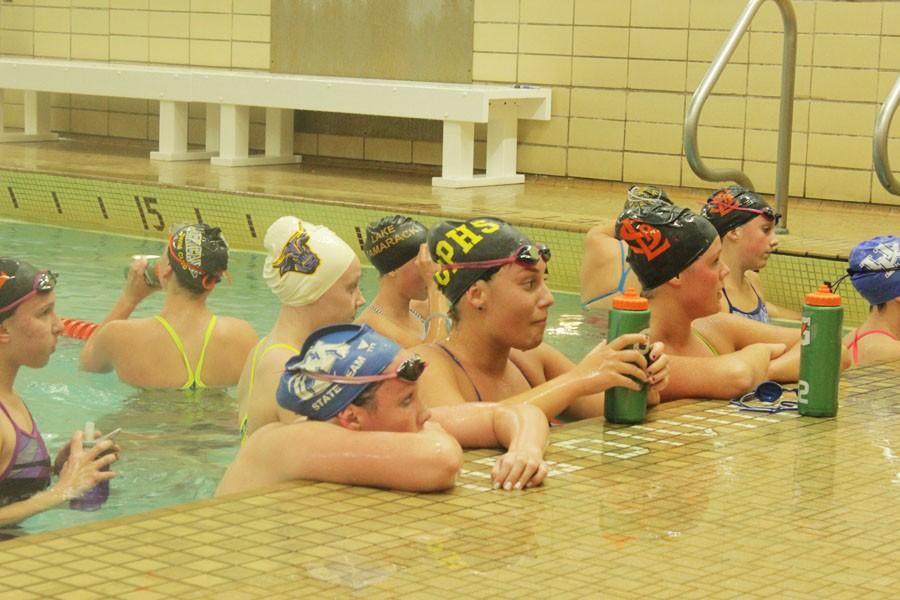Pool to receive new ventilation system
Swimmers struggle during practice
Girls’ swimming continues to practice in the school pool despite ventilation issues.
October 14, 2015
As sophomore Nicole Sanford neared the end of her two-hour swim practice, she said she struggled to breathe due to the air quality in the pool area.
Without a proper way to circulate air in an indoor pool area, irritants known as chloramines build up and can cause poor air quality, which can lead to excessive coughing and difficulty breathing, according to the Center for Disease Control.
According to girls’ swimming coach Joe Yaeger, Park will get a ventilation system in the pool area to improve air quality and reduce difficulty of swimmers’ breathing.
“Each pool is getting a new (system), but you cannot just go to the store and pick it up,” Yaeger said. “Everything that needs to be done is done, we are just waiting for the product. I do not know when (we will install it).”
Sophomore Nicole Sanford said she and other swimmers have trouble breathing and cough frequently toward the end of practice.
“If we are sprinting, doing hundreds or working hard, it is difficult to breathe and makes it a lot harder (to swim),” Sanford said. “At least for me, and I hope I am speaking for other swimmers too, it makes it really hard to push yourself at practice and get better.”
Yaeger said he noticed air quality became an apparent problem last year and becomes exacerbated during certain conditions.
“It is (a problem) primarily when the weather gets really cold at night and semi-warm during the day, when there are big temperature changes,” Yaeger said. “If we practice for two hours, it is for the last 20-30 mins. They just cough and tend to breathe while swimming more.”
Once swimmers begin to cough or have trouble breathing, Yaeger said he gives them methods to cope.
“While they are in the water, and they know a coughing fit is coming up, I tell them to just relax and slow down (their) breathing, don’t cough, breathe all the way in and out and drink water,” Yaeger said. “If (they) get to the point where it is really bothering (them), stepping out in the hallway helps, or in front of a fan.”
Although the team performs well so far this season, Sanford said the poor ventilation prevents the team from reaching its full training potential.
“In meets it is usually fine because we are in and out of the pool, it is not constant exposure,” Sanford said. “It definitely affects how well we can train and makes it harder to get better overall.”
Yaeger said the air quality is irritating, but is not harmful to the swimmers’ or coaches’ health.
“Our ventilation works, it is just not working at the capacity it should be at right now. We just need to accelerate that process,” Yaeger said. “It is a safe environment to be in, it is just not keeping up with the amount of use that we have during those two-hour practices.”
Sanford said she hopes something will be done soon in order to improve the air quality of the pool area.
“I think they should of had it done by this year or moved us to a different pool because it is really bad,” Sanford said. “I guess they are doing the best that they can.”




